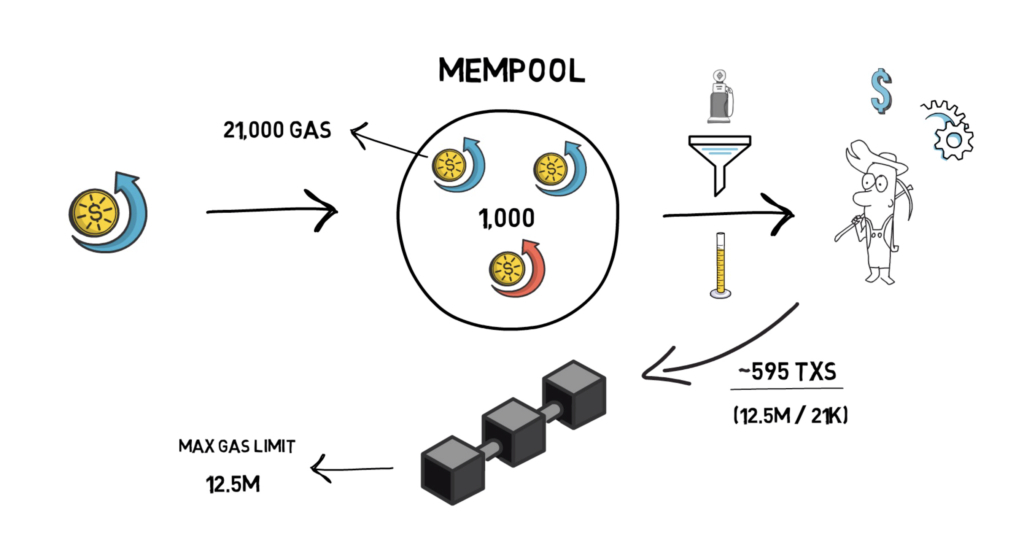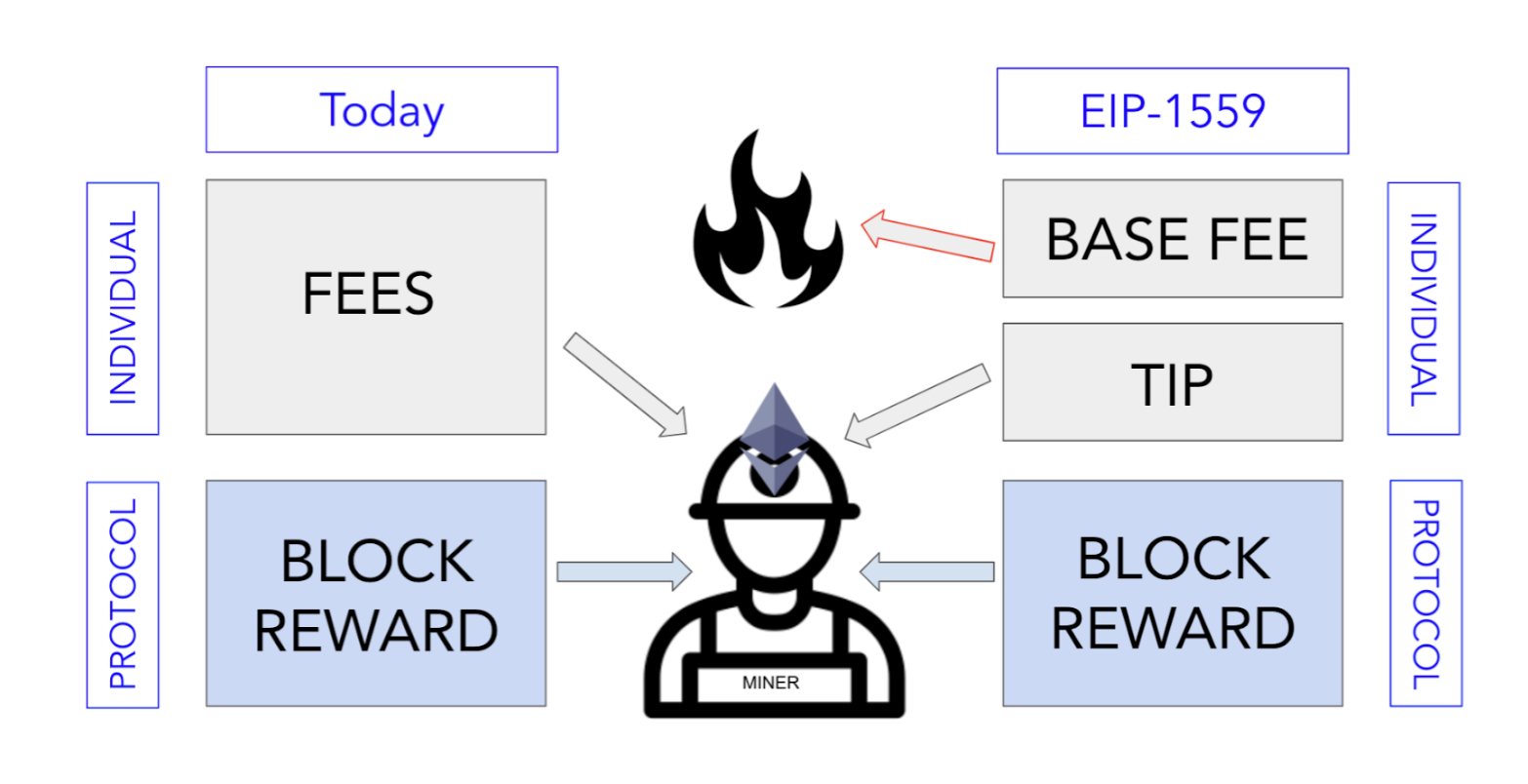What is EIP 1559? EIP 1559 is one of Vitalik Buterin’s passionate improvement proposals from 2019. It can be said that EIP 1559 is one of the turning points in Ethereum’s tokenomics. So, if there’s anything interesting about EIP 1559, let’s find out in the articles below.
To better understand EIP 1559, people can refer to some of the following content:
- Crypto Panorama 101 | Episode 3: What is Ethereum?
- What is Mempool? The Importance Of Mempool In Blockchain
What is EIP 1559?
Development history of EIP 1559
EIP stands for Ethereum Improvement Proposal, roughly translated as Ethereum Improvement Proposal. EIP 1559 is one of the most important proposals for the Ethereum network, it was first shared with the community in April 2019 with Vitalik Buterin and Eric Conner, and was later developed and demonstrated by the Ethereum network. Ethereum developer for over 2 years.
In the past, Ethereum has undergone many improvement proposals such as:
- EIP 20: Provides standards for tokens on Ethereum, helping to improve interoperability between tokens.
- EIP 150: Improves security and performance for nodes on Ethereum by adding a signature checking system for new blocks.
- EIP 196 and EIP 197: Introduce several new opcodes that enable calculations such as SHA3 hashes and higher-speed symmetric cryptography on Ethereum.
- EIP 140: Introduces opcodes to allow programmers to assign text data to transactions and messages on the Ethereum network
Above are just a part of the EIPs that have been deployed on the Ethereum network. Unlike past EIPs that did not receive much attention from the community, EIP 1559 received community attention and attention until it was successful.
Problems with Ethereum’s fee model
Ethereum’s current transaction fee model will operate according to the First-Price Action mechanism. With this mechanism, users will freely set transaction fees, then their transactions will be sent to Mempool – where transactions are stored before being included in the block. Here, miners will choose high-fee transactions to include in the block first.

This leads to situations where the market fluctuates, latecomers will propose higher fees than previouscomers, and thus fees on Ethereum will be pushed to incredibly high levels. Here, the previous user was forced to wait for the gas to go down for his transaction to be completed or had to add money to the previous transaction.
The biggest disadvantage of this model is that gas fees on Ethereum are unstable, easily pushed up too high when the market experiences FOMO or FUD. From there, we have the birth of EIP 1559.
Overview of EIP 1559

The main general content of EIP 1559 is: change the gas pricing mechanism on the Ethereum network. With EIP 1559, gas fees will be broken down into 2 different types of fees including:
- Base Fees: This is a concept first introduced in EIP 1559, which is the minimum fee that users must pay for their transactions. Base Fee is high or low depending on how busy the network is. Special, Base Fee will be burned.
- Tips: Is the fee that users will give to miners to give their transactions more priority
Besides, with EIP 1559, the maximum gas limit fee per block is also increased from 12.5M to 25M.
Pros and cons of EIP 1559
Like all previous updates, EIP 1559 also has some unique advantages and disadvantages such as:
|
Advantage |
Defect |
|---|---|
|
Transaction fees on Ethereum are more stable and predictable. There will no longer be many cases where fees are pushed to sky-high levels. |
Miners’ income will certainly decrease significantly when there is a time when miners’ fees account for up to 50% of their revenue. |
|
ETH will deflate: With Base Fee being burned, ETh will certainly enter a period of deflation, but the degree of deflation is fast or slow, which needs to be observed more. |
Miners can attack the network together to express their disagreement with the update. |
|
After EIP 1559 The size of each Block is increased increasing can lead to reduced congestion on the network and can lead to cheaper fees because there are more transactions in the same block. |
A decrease in revenue could lead to miner shutdowns and could affect the decentralization of the Ethereum network. |
Ethereum’s Development Roadmap After EIP 1559
The Merge
After EIP 1559, Ethereum’s development path is still very long ahead and one of the most important events in the next period is The Merge. The Merge is the moment when Ethereum’s network officially switches from Proof of Work to Proof of Stake consensus mechanism.
In addition, after The Merge there will be changes on the network as follows:
- The consumption of the Ethereum PoS network is reduced by 99.95% compared to Ethereum PoW. This eliminates Ethereum from criticism related to environmental pollution, power consumption,…
- Ethereum’s inflation rate decreased by 90%. The number of ETH minted each day decreased from 13,000 ETH to only 1,6000. Combined with the EIP 1559 update, Ethereum will certainly enter a deflationary phase.
- Users can stake their idle ETH with an expected APY of 7 – 12%.
- Ethereum’s block completion time is reduced to about 13 seconds.
Everyone can read the article What is The Merge? A Turning Point for Ethereum’s Growth to better understand the hardfork The Merge.
EIP 4488
EIP 4488 is an update that helps optimize data calls from Layer 2 to Layer 1, thereby reducing transaction fees on Layer 2. However, EIP 4488 also has many disadvantages such as making the Ethereum network heavier. .
Everyone can read the article What is EIP 4488? Pros & Cons of EIP 4488 On Ethereum to better understand the EIP 4488 update.
Danksharding
Getting to Danksharing is a very long road, up to several years, but we can look forward to the EIP 4844 update, also known as Proto Danksharding – which is an update to create a stepping stone and infrastructure for Danksharding.
EIP 4844 is an update that introduces a new type of data compression called Blob Data to replace Call Data, making Layer 2 networks much cheaper. Everyone can read the article What is Danksharding? All About Ethereum’s Danksharding & EIP 4844 to understand more about Danksharding and the EIP 4844 update.
Summary
EIP 1559 brings users, investors and protocols built and developed on Ethereum many visible benefits, but it goes against the interests of miners. Whether EIP 1559 will be successful or will face fierce opposition from the miner community, everyone will wait with us. Hopefully through this article everyone can understand what EIP 1559 is?


